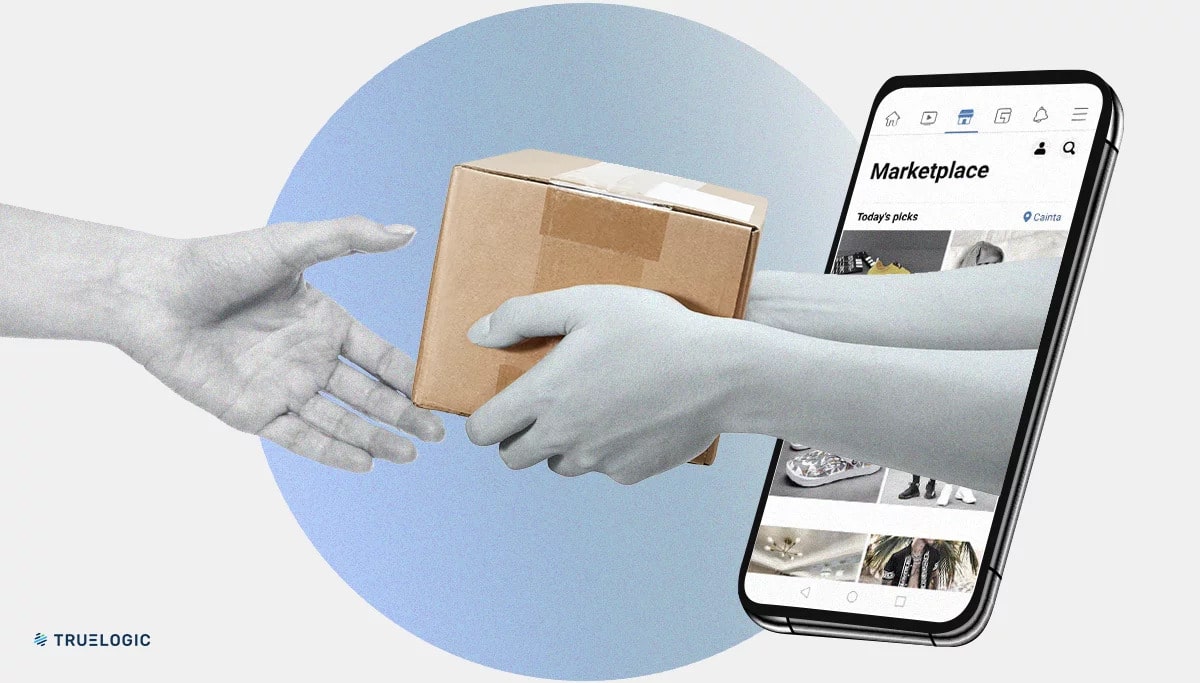Direct-to-Consumer Ecommerce vs Marketplace Strategy

Truelogic Takeaways
This can’t be stressed enough: the digital economy is rapidly evolving, and choosing the right platform for your brand’s direct to consumer ecommerce strategy is more than ever. PCMI insight revealed that the Philippines’ ecommerce market is projected to reach an impressive $40.5 billion by 2027, continuing its path as one of Southeast Asia’s standout digital economies, with an expected 13% annual growth through the coming years.
With the online shopping landscape expanding at a breakneck pace, businesses are often caught between building their own ecommerce websites or leveraging established marketplace online platforms. This decision impacts everything, from your brand control to customer data access and long-term growth potential.
Here, we will answer one of the most pressing questions puzzling digital marketers right now: “When it comes to ecommerce vs marketplace for selling directly to consumers, which approach best aligns with your business goals in 2025 and beyond?”
Don’t worry, we’ve done the heavy lifting for you. By exploring key differences, benefits, and challenges of these channels, and drawing expert insights, you’ll gain clarity to make a strategic, informed choice that drives sustainable growth.
But before that let’s have a look at what Direct-to-Consumer Marketing is:
What is Direct-to-Consumer (DTC) Marketing?
DTC marketing is when brands sell products or services directly to customers, skipping intermediaries like retailers or wholesalers. This means businesses own the customer relationship, controlling everything from branding and advertising to the final delivery support experience.
Why does it matter today?
The rise of direct to consumer ecommerce is transforming how discovery, personalization, and brand loyalty are forged. With AI and data-driven strategies shaping shopping behavior, brands have unprecedented access to customer insights, thereby fueling smarter decisions, more relevant marketing, and better long-term results. DTC is now as much about data as it is about sales.
Marketplace vs Ecommerce: The Key Differences
Every online platform gives you access to digital shelves, but how you sell, scale, and own your growth story is shaped by the core DNA of that platform. Choosing between your own ecommerce platform and a shared marketplace online presence isn’t just a technical decision. It’s a big-picture, strategic choice that impacts how your brand is seen, what you really control, and how your business adapts as the market evolves.
So, what really sets e-commerce and online marketplaces apart?
Control and Customization
- In ecommerce, you have complete control over website design, layout, branding, and user experience. You can create a unique environment reflecting your brand’s values, customer journey, and messaging
- Meanwhile, marketplaces online operate within fixed templates and branding. Sellers must conform to the platform’s layout and visual rules, limiting personal creativity and customer touchpoints.
Fees and Costs
- With an ecommerce marketplace (your own site), expect a higher upfront investment and ongoing maintenance, but keep your full profits after costs. Say for example, the average website cost for an ecommerce site in the Philippines typically lands between ₱100,000–₱250,000 for freelancers, ₱250,000–₱2,000,000 for agency-built projects, or ₱1,000–₱16,000/month for DIY platforms like Shopify.
- Commission rates on most major ecommerce marketplaces generally range from as low as 5% up to 15% per sale, depending on the platform, category, and additional service fee. For instance, Lazada Philippines’ commission rates in 2025 span 1% to 5% for standard sellers and around 11% for LazMall, plus payment and campaign fees, creating a nuanced fee landscape for anyone selling on multiple platforms.
Branding Impact
- An owned ecommerce site lets you build unfiltered brand presence; custom banners, stories, ambassadors, and content all reinforce your image and help establish a memorable direct to consumer marketing engine.
- In a marketplace, branding is secondary to the umbrella platform. Your logo and visuals sit beside competitors, and the buyer’s relationship is often more with the platform than your business.
Marketing and Traffic
- With your own site, you’ll need strategic social media marketing and e-commerce marketing to generate traffic from scratch. It’s more work but allows precise targeting for long-term growth.
- Marketplaces on the other hand provide instant exposure to massive, highly audiences. Traffic is baked in, but competition is fierce, and standing out can actually cost extra.
Data Ownership and Customer Insights
- On your own ecommerce platform, you own all customer data–email addresses, purchase histories, and even browsing behavior. This fuels better retention, smarter offers, and effective direct to consumer ecommerce strategies.
- Most marketplaces limit your analytics access. Sellers only surface behavior, making it challenging to fully understand or re-engage buyers.
Scalability
- Ecommerce platforms can be scaled up by adding features,integrations, or more advanced e-commerce SEO, but growth is entirely your responsibility.
- Marketplaces easily accommodate more products and sales; however, rules and fees can change, affecting your scalability and stability.
Hybrid Approach: Leveraging Both Channels Strategically
Ecommerce vs marketplace? How about “ecommerce and marketplace”?
The smartest DTC brands combine the strengths of marketplaces and owned online stores for maximum reach and resilience for them to thrive in today’s fragmented, AI-driven economy.
Why a Hybrid Model Works?
- Data shows that brands treating marketplaces and branded sites as complementary typically capture more market share across demographics and channels.
- A hybrid system leverages instant traffic and shopper trust from marketplace online locations, while building loyalty and data on your own DTC site.
- You stay agile, meaning when one channel’s policy shifts or ad rates climb, you can flex investment towards the other.
Practical Tips for Transitioning
- Start with a marketplace – Validate demand, test pricing, and build initial customer trust.
- Collect data and feedback – Use marketplace analytics to understand what sells and who your market is.
- Build your DTC site next – Launch with proven products, optimizing for SEO, UX< and retention.
- Strategically integrate channels – Sync payment options, promotions, inventory, and messaging for unified customer experience; think “bricks and clicks” for maximum flexibility.
- Monitor, Adapt, and Scale – Set up routine check-ins on channel performance so you don’t become overly reliant on a single partner’s rule or fees.
A very good example of transitioning from marketplaces to ecommerce platforms is PLDT, a major telecom brand in the Philippines. They set up their consumer ecommerce platform while still offering select products in popular marketplaces. This approach allowed them to scale online sales fast, collect data, and eventually migrate traffic to their own, customizable portal as customers’ trust deepened.
How AI is Changing Product Discovery and What It Means for Brands
The digital shopping journey is evolving at a pace brands can’t afford to ignore. AI is no longer just a backend optimization tool, it’s at the forefront of how modern consumers discover, compare, and ultimately select products. Shoppers today trust AI assistants and recommendation engines to sift through countless options, spotlight relevant products, pull real user reviews, and suggest items tailored to personal needs and budgets.
Recent data reveals that 66% of shoppers who buy online multiple times a week now regularly use AI tools like ChatGPT to inform their purchases, and over a third seek out new products via AI-powered discovery. Gen Z leads this trend, but curiosity and adaption are rising across every age group and demographic.
The implications for brands in both the ecommerce marketplace and marketplace online worlds are profound:
- AI-powered comparisons – Consumers expect AI to line up similar products, dissect specs, weigh pros and cons, and highlight the best deal instantly—making clear, structured product data and reviews essential. Being present on an owned and shared marketplace also allows you to appear several times for the same recommendation.
- Personalized results – AI-driven recommendations prioritize brands that provide rich, context-specific information and user-generated content. The more detailed, honest, and diverse your customer feedback, the better AI can match your products to shopper intent.
- Content-driven trust – Today’s shoppers view customer reviews, real-scenario photos, and even negative feedback as proof of authenticity that AI can analyze and elevate. Quantity, detail, and variety in your content ecosystem matter more than ever.
- Visibility depends on the “machine diet” – Brands that proactively “feed the machine” with fresh reviews, clear product answers, and thoughtfully structured descriptions will surface more often in AI-driven suggestions, helping their products cut through the digital noise.
Key Insight: In 2025, it’s not just your ad copy or SKU volume that drives growth, it’s the richness, relevance, and authenticity of your product content and customer feedback. Brands that nurture this ecosystem position themselves at the center of AI-powered discovery and shopper trust.
How to Choose the Right Digital Platform for Your Brand
Choosing between direct to consumer ecommerce and marketplace online isn’t a binary decision. Instead, use this quick self-assessment to guide your DTC platform strategy in 2025 and beyond.
Step-by-Step Decision Framework:
1. Clarify Your Goals
Are you launching for speed and volume or to build a unique, lasting brand presence?
2. Review Your Budget
Do you have the resources for upfront investment and marketing, or do you need low/no start-up costs?
3. Assess Brand Identity Needs
How crucial is a fully customizable experience and long-run data ownership (essential for serious direct to consumer marketing)?
4. Evaluate Your Marketing Expertise
Are you ready to handle e-commerce marketing and e-commerce SEO, or do you want incoming customers via a trusted platform?
5. Diagnose Your Data Hunger
Do you want complete insight into who buys from you, or is exposure to a mass market enough for now?
Key Insight: There’s no universal roadmap; only the right blend for your brand’s goals, capacity, and appetite for control. Use this framework and revisit your strategy as your business and the market evolve.
Stop Choosing. Start Building Your Own Blend.
The smartest ecommerce leaders aren’t locked into choosing only a single channel. Instead, they’re relentlessly blending owned sites, marketplaces, and the power of AI-driven discovery to maximize both growth and control.
The secret? Understanding that digital success is never static, your strategy should evolve as quickly as the market does. Ready to plot a course that’s actually built for how real customers shop now?
If you’re looking to sharpen your execution and elevate results, partner with a team that understands the full omnichannel journey. With Truelogic’s expertise in digital marketing strategies for ecommerce, you get actionable solutions, from traffic and branding to conversion and retention, that set you apart in both marketplaces and your owned platforms. Let’s start your next chapter in digital growth.









